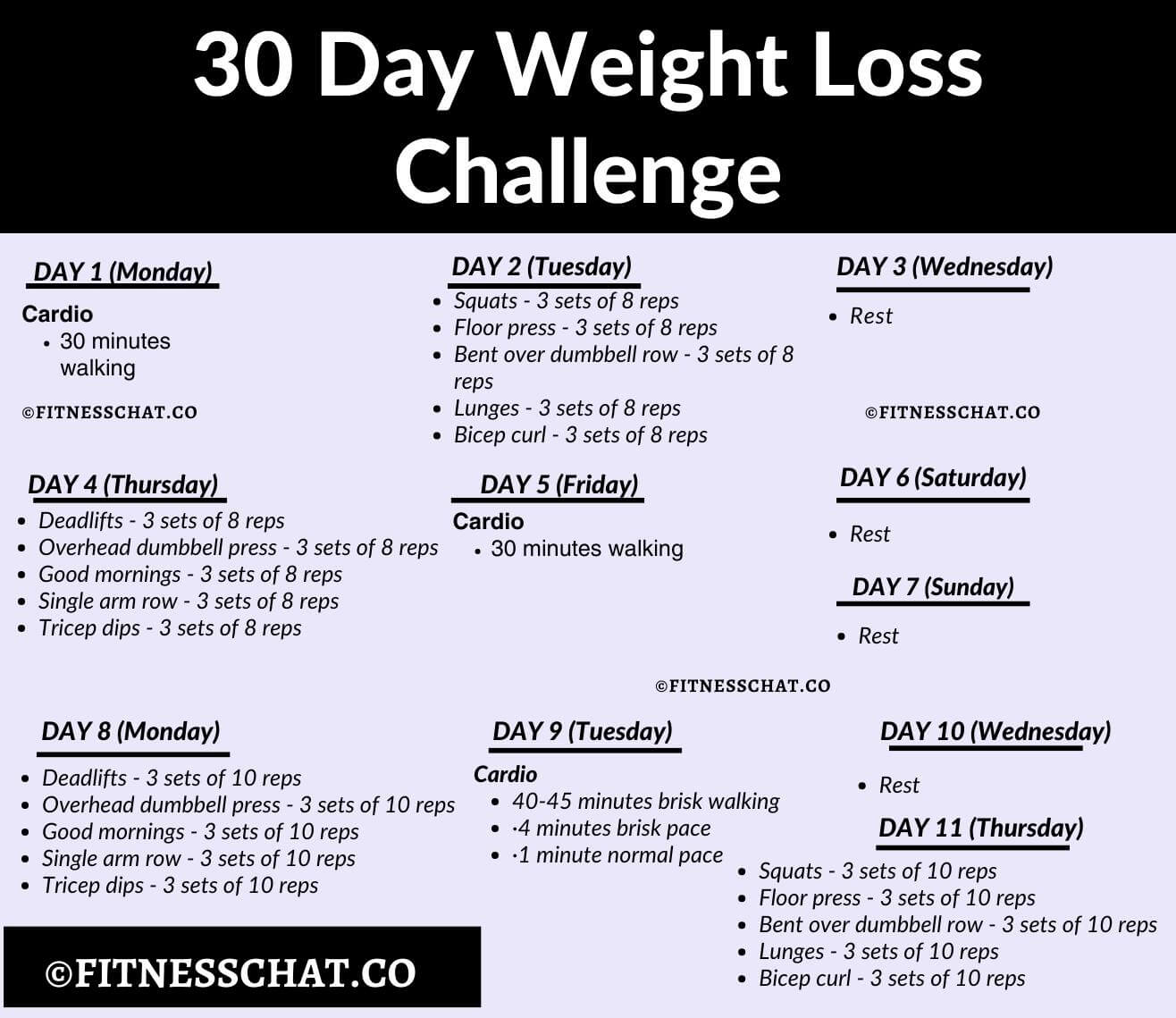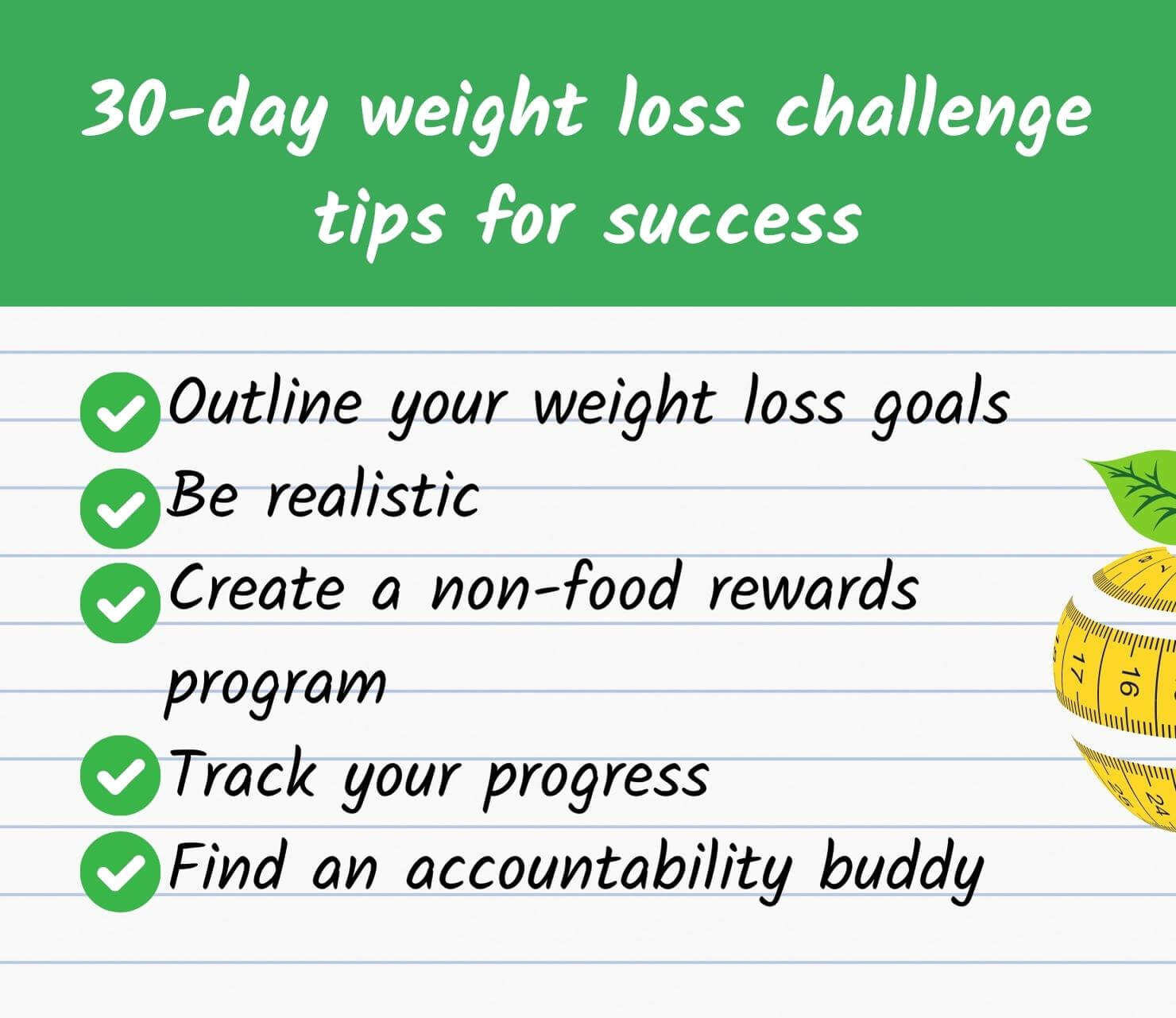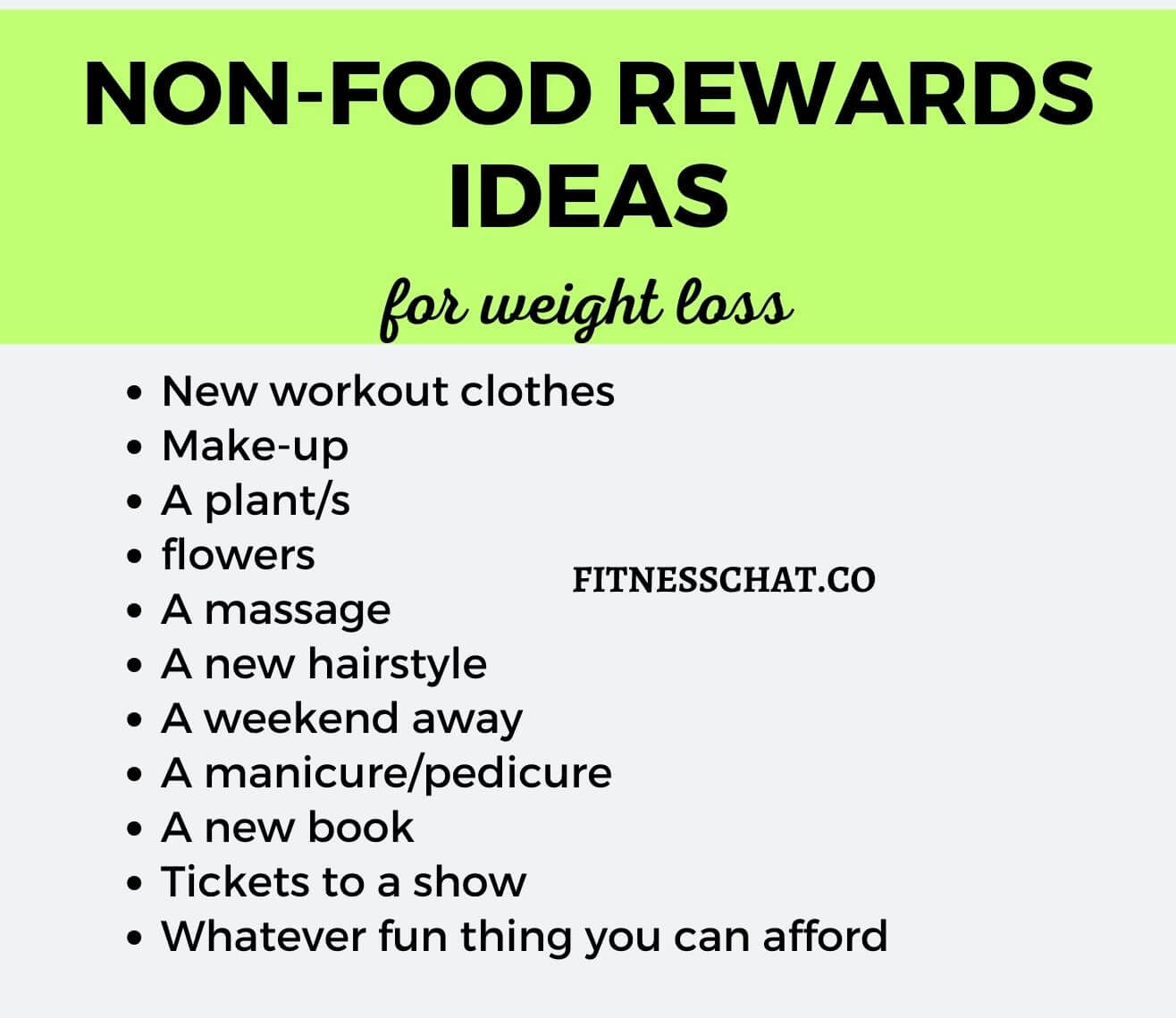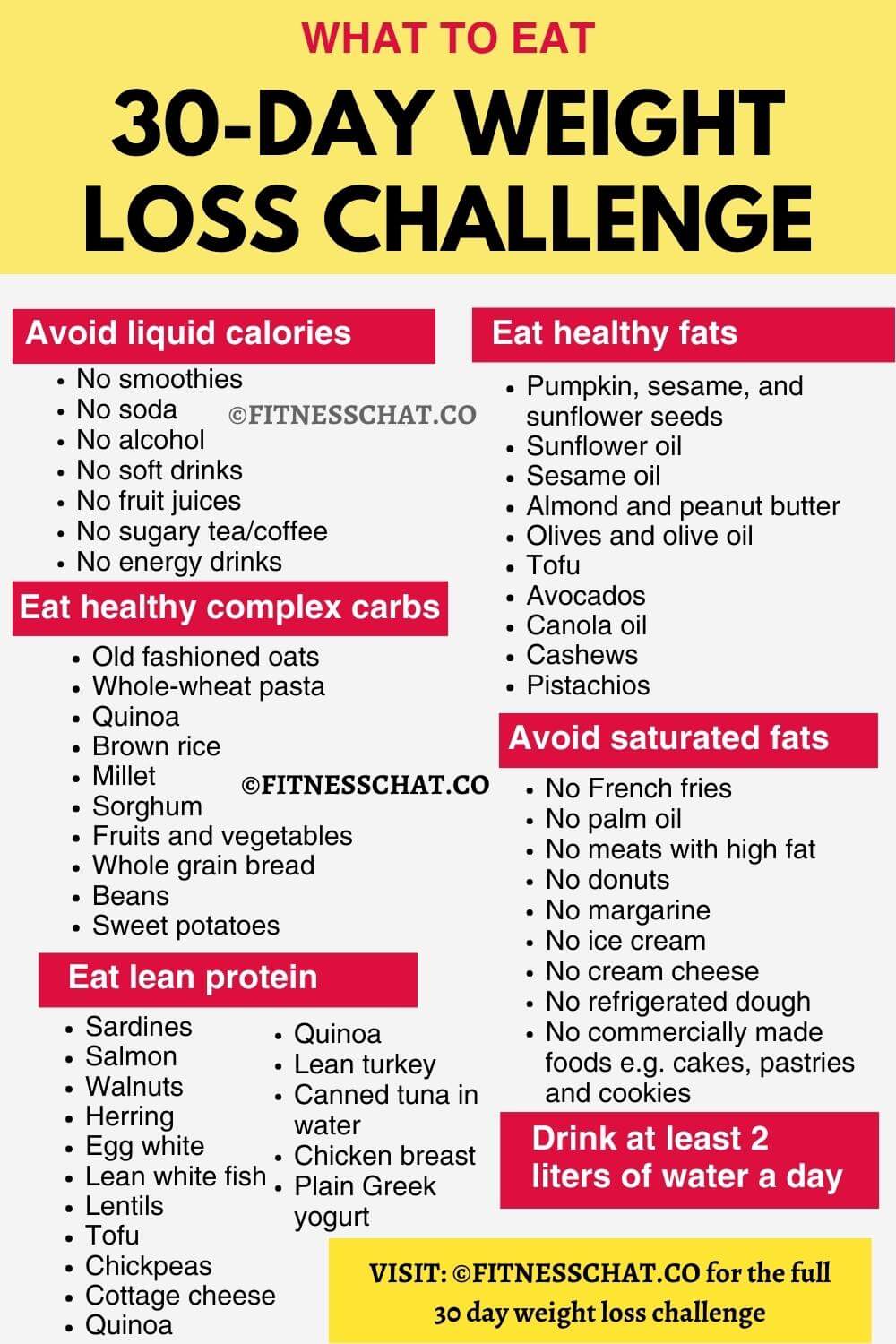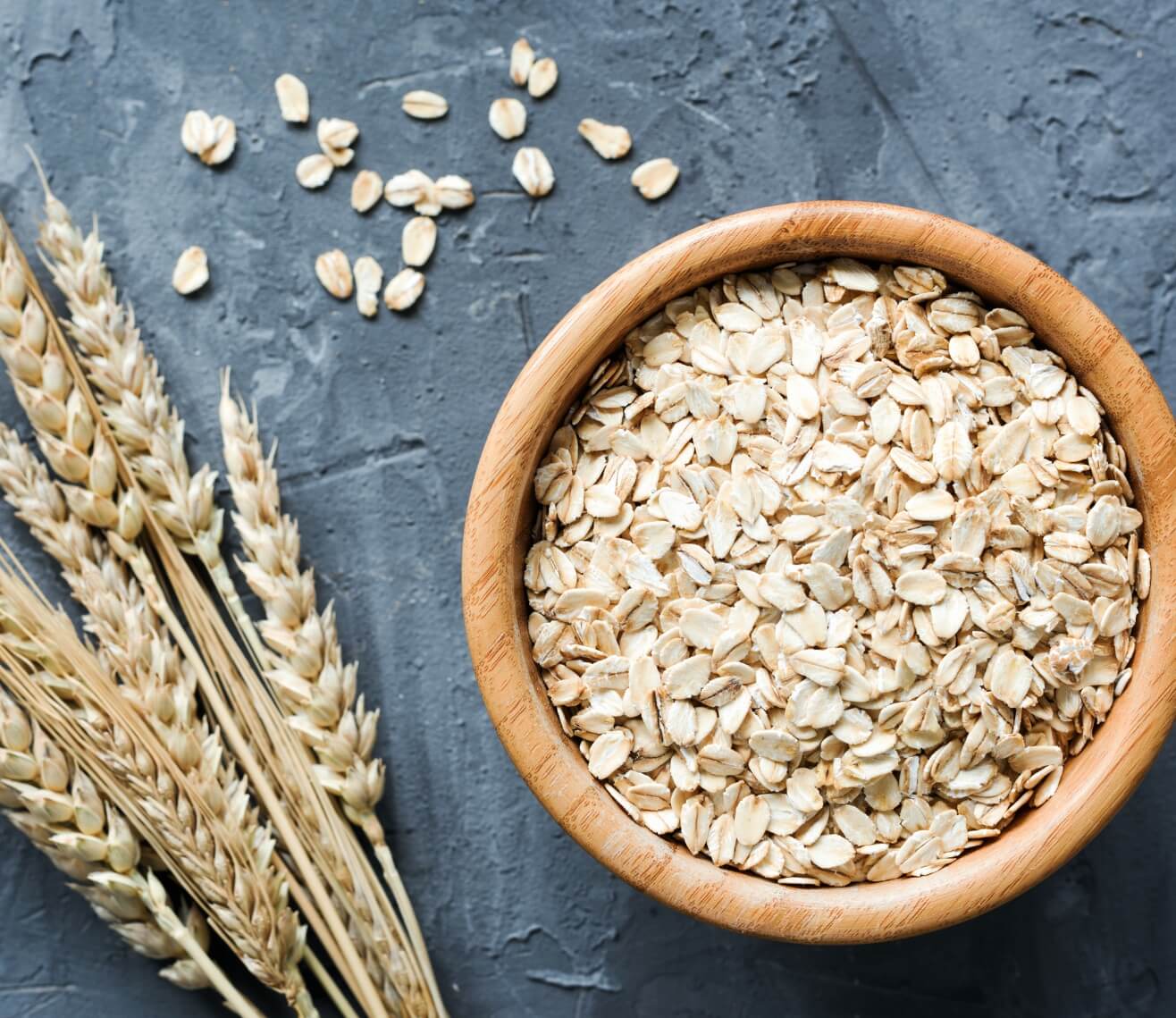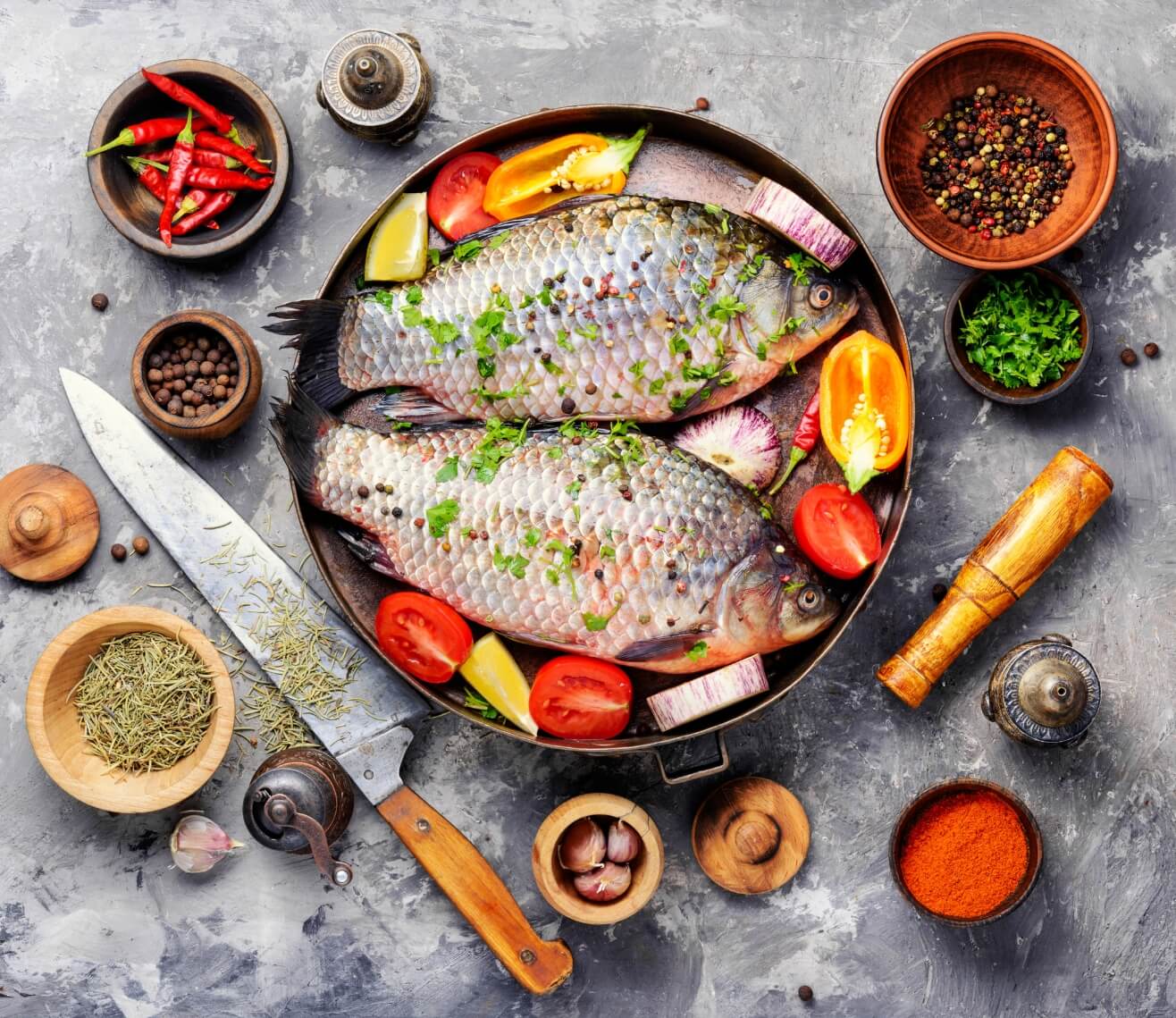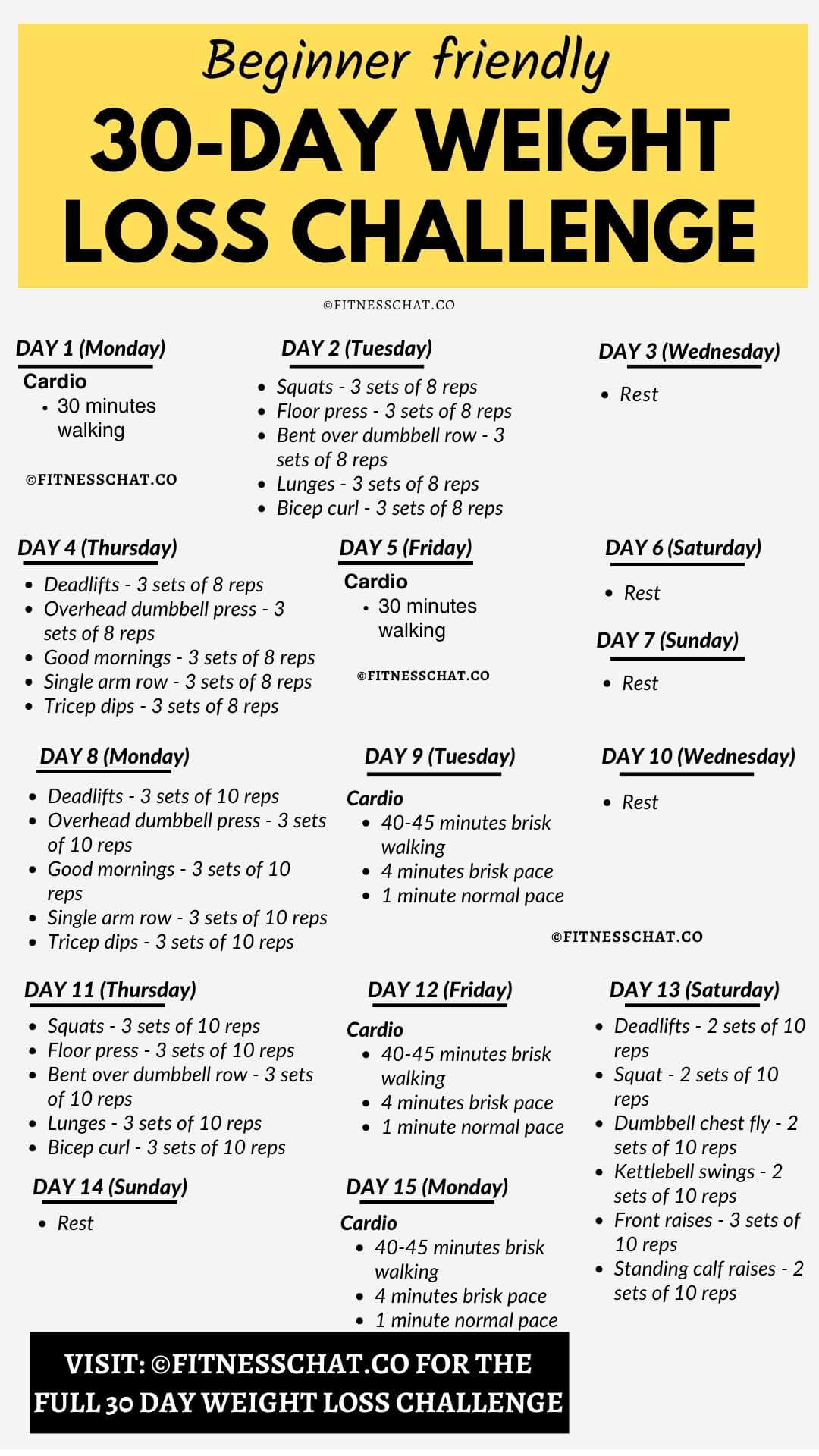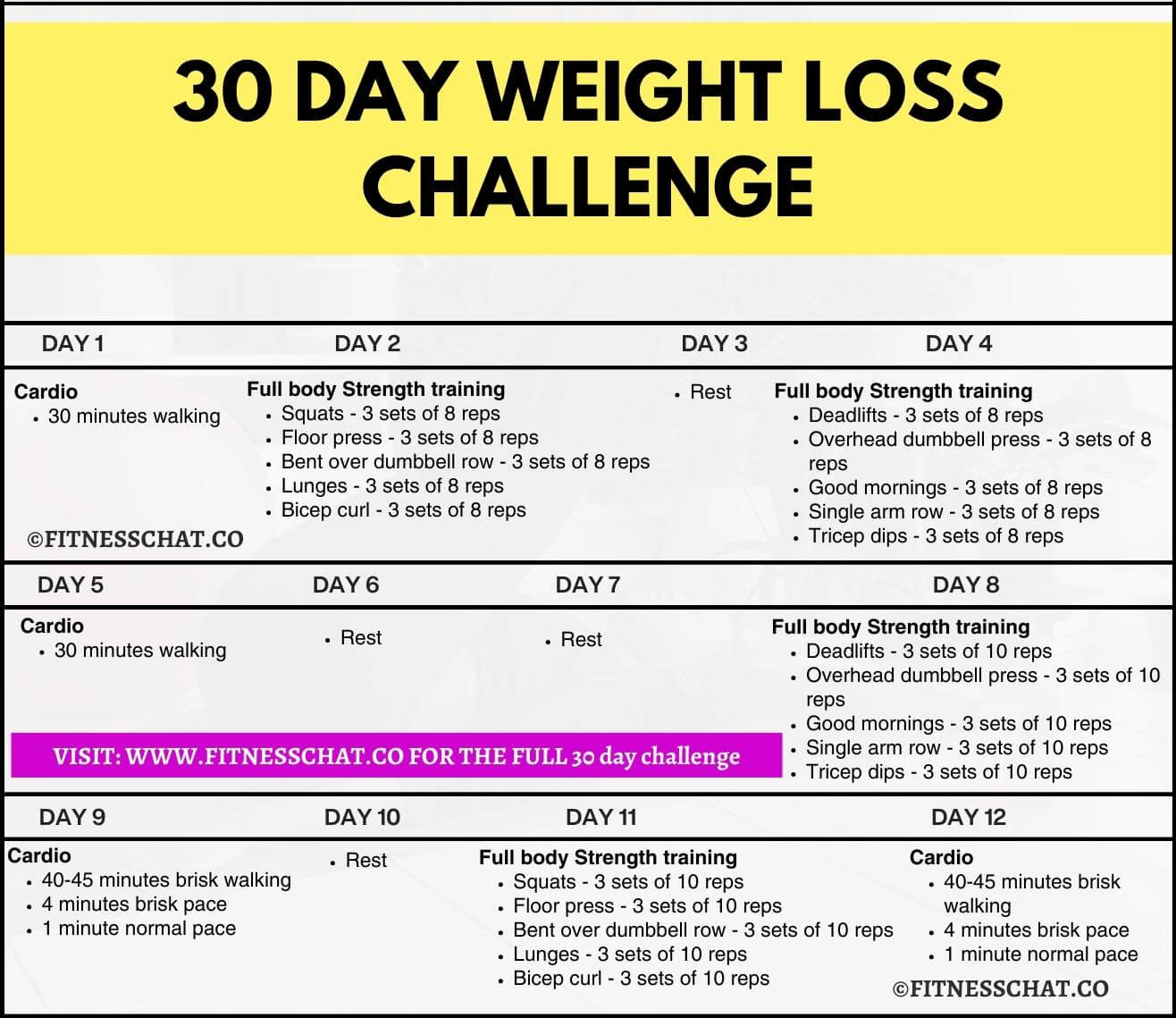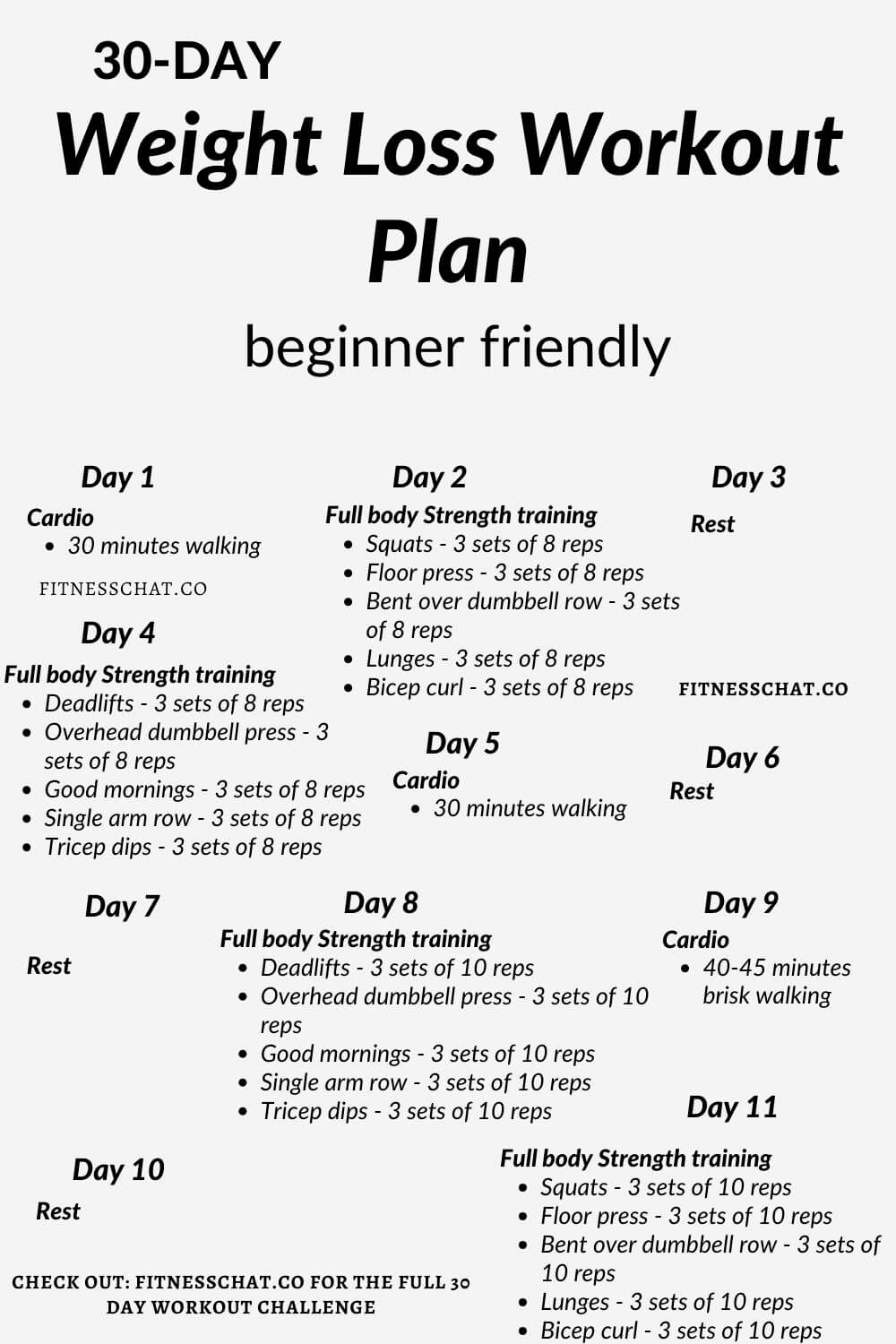Joining a 30 day weight loss challenge is easily one of the best ways to kickstart your weight loss journey. This is because this 30 day weight loss plans is beginner-friendly, making it easier to start slow and stick with it for the long haul.
Getting started with the 30 day weight loss challenge
Before getting started with any fitness challenge, it is worth remembering that you are responsible for your actions. Your 30 day weight loss challenge results will heavily depend on the actions you take during this period.
While this weight loss plan gives you a balanced structure to help you achieve your weight loss results, you alone are responsible for ensuring that you stay on track and put in the work.
This means that before getting started, you should put a plan to hold yourself accountable on your weight loss journey.
Table of contents
- Weight Loss Challenge Tips for Success
- What to eat during the 30-day weight loss challenge
- Equipment required
- 30 Day Weight Loss Challenge
- What next after 30 day weight loss workout plan
30 Day Weight Loss Challenge Tips for Success
A 30 day weight loss workout plan is supposed to push you when you need motivation, or when you are slacking and need to get back into being consistency.
1. Outline your weight loss goals
Be very specific about how much weight you want to lose, how you will achieve it, and when you would like to reach your weight loss goal.
It’s not enough that you desire to lose weight- in fact, we all want to lose weight, but what matters is what we do about it that’ll drive results.
Write down your weight loss goals and stick them on your wall, mirror or fridge.
2. Be realistic
As you add numbers to your weight loss goal, be realistic. While it may sound exciting and motivating to say that you want to lose 20 pounds in two weeks, it really isn’t realistic to lose that much within a short space.
Yes, others have lost 20 pounds in two weeks, but scientifically, this rapid weight loss approach is neither safe nor sustainable. Slow and steady wins the weight loss race.
In a realistic sense, you should aim to lose 1 to 2 pounds a week. This would work out to about 8 pounds a month. So, if your ultimate weight loss goal is 20 pounds, your timeframe should be around 10-12 weeks.
3. Create a non-food rewards program
While on this 30 day weight loss challenge, you should reward yourself for the job well done now and then. When you reach a milestone, such as completing the first 7-days or losing your first 2 pounds, you can treat yourself with non-food rewards.
Weight loss rewards can include new workout clothes, make-up, a plant, flowers, a massage, a new hairstyle, a weekend away, a manicure/pedicure, a new book, tickets to a show, or whatever fun thing you can afford.
More beginner friendly 30 day workouts
- 30 day ab challenge for beginners that works
- 30 Day Arm Challenge to Get Rid of Flabby Arms
- 30 day leg challenge that works like crazy
4. Track your progress
Another effective way to keep yourself accountable is to keep track of your progress using a fitness journal or small notebook.
Tracking your meals, workouts, starting weight, goal weight, and physical, social, and mental well-being allows you to look back at the end of a month and see what worked, what needs improvement or where you took a wrong turn.
Keeping track of your progress will remind you where you started, where you are right now, and where you see yourself at the end of your deadline.
5. Find an accountability buddy
An accountability partner doesn’t necessarily have to be someone also on a 30 day weight loss challenge. Your weight loss accountability partner can be someone who has lost weight before and is willing to guide and motivate you.
At the end of the day, whoever you end with as your accountability partner, make sure that they’re dependable, able to push you, and understand your goal and why it’s important to you.
When it gets too hard, or you’re feeling defeated, your accountability partner should be the person who reminds you why you started, what you’ve achieved so far, and why you NEED to get up and keep pushing!
What to eat during the 30-day weight loss challenge
The most important thing about any weight loss challenge is diet. You should develop a healthy mindset about food and understand that keeping weight off is a long-term game that requires you to change your eating habits.
To lose weight, you must create a caloric deficit by eating fewer calories than your body burns.
The recommended initial strategy for weight loss is a low-calorie diet. This plan requires that you eat 500-750 fewer calories than your body expends, which works out to eating between 1000 and 1500 calories [1].
Calories in – calories out = weight loss
Along with that, you must also understand that weight loss will not happen overnight. You’re not going to see significant weight loss results when you eat clean for five days a week and go wild on junk for the remaining two days of the week.
Your diet should be consistently healthy, and if you have more than 10 pounds to lose, be prepared to do more than a month-long weight loss challenge to see results.
Once your mind is in the right space for weight loss, figure out how your diet is actually going to look like.
Here are some of the steps that will teach you how to eat healthy during this 30 day weight loss challenge:
Avoid liquid calories
Liquid calories include smoothies, sodas, alcohol, soft drinks, juices, sugary tea and coffee, and other drinks with added sugar.
While calories are calories no matter where they’re coming from, the body processes calories differently depending on their structure.
Liquid calories are absorbed faster than those from semi-processed and whole foods.
For example, if you consumed 300 calories from a breakfast smoothie (simple carbs), while the other person consumed the same number of calories from oatmeal (complex carbs), the person who had oatmeal will feel longer than you.
Unlike complex carbs, simple carbs are easily used for energy and cause sudden spikes in blood sugar and rapid release of insulin from the pancreas [2].
To avoid fluctuating energy levels throughout the day as a result of simple sugars, eat foods that are known to help maintain energy throughout the day. This leads us to the next point.
Eat complex carbs
Simple carbs provide calories without nutritional value and cause blood sugar spikes. On the other hand, complex carbs are healthier and can create lasting energy because they take longer to digest.
Your diet plan for weight loss should include complex carbs. Because glucose is released into the bloodstream gradually, eating a diet rich in complex carbs will help keep your sugar levels steady.
Since complex carbohydrates take longer to digest, they help keep you feeling full longer. However, you should be mindful of portion sizes because calories add up, and too much of a good thing can be just as bad.
Some of the healthy complex carbs that you should add to your 30 day weight loss challenge include:
- Old fashioned oats
- Whole-wheat pasta
- Quinoa
- Brown rice
- Millet
- Sorghum
- Fruits and vegetables
- Whole grain bread
- Beans
- Sweet potatoes
Eat healthy fats
There are two categories of fats – saturated and unsaturated fats – both have different effects on health and weight loss.
Saturated fats are unhealthy associated with fat accumulation and heart disease. Saturated fats include chicken thighs and drumsticks, French fries, and palm oil.
Others are meats with high fat, donuts, margarine, ice cream, cream cheese, refrigerated dough, and commercially made foods such as cakes, pastries and cookies [3].
Unsaturated fats fall under healthy, good fats and can help increase energy expenditure and reduce heart disease risk, fat storage, and inflammation [4] Sources of healthy fats include:
- Pumpkin, sesame, and sunflower seeds
- Sunflower oil
- Sesame oil
- Almond and peanut butter
- Olives and olive oil
- Tofu
- Avocados
- Canola oil
- Cashews
- Pistachios
Eat lean protein
Protein is important in a weight loss diet because it helps increase the secretion of the satiety hormone and reduces the secretion of ghrelin, the hunger hormone. A protein-rich diet will also help regulate blood sugar levels and boost metabolism [5].
For long-term fat loss, a high-protein diet coupled with strength training is essential to building and maintaining muscle mass [6].
Lean protein sources include:
- Sardines
- Salmon
- Walnuts
- Herring
- Egg white
- Lean white fish
- Lentils
- Tofu
- Chickpeas
- Cottage cheese
- Quinoa
- Lean turkey
- Canned tuna in water
- Chicken breast
- Plain Greek yogurt
Drink water
If you drink a lot of sugary drinks, it’s best that you replace them with water. If you are one of those people that can’t seem to drink enough water, make it a priority to drink at least 2 liters of water a day.
If plain water is too bland, try infusing it with fresh fruits or herbs. For the body to function properly it needs water. Drinking water can help speed up metabolism and reduce hunger and appetite [7].
Getting started- 30 day weight loss workout plan
If you have done any of my 30-day workout plans, you will know that I do not advocate for unrealistic workouts that go from doing 10 squats on day 1 to 250 squats on day 30.
What you can expect from this 30 day weight loss challenge is a well-paced and balanced workout schedule that includes cardio and strength training.
*This post may include affiliate links. You can read my full disclosure here. If you click through my referral link, at no additional cost to you, I may earn a small commission if you make a purchase.
Equipment required
You will need the following for this 30-day weight loss workout plan:
- Dumbbells – This depends on your fitness level and the specific exercise. If you’re a beginner, you may need to start with at least three different weights of dumbbell sets.
I recommend 3-5 lbs, 8 lbs, and 12 lbs dumbbell sets. If you are intermediate or advanced, you can go higher.
- A kettlebell – You may start with a 10 lbs kettlebell and work your way up.
- A workout bench or sturdy chair – You don’t have to go out of your way to buy a bench. You can use a sturdy chair, Swiss ball, or the floor.
- A thick exercise mat
30 Day Weight Loss Challenge
Day 1
Cardio
30 minutes walking
Day 2
Full body Strength training
Squats – 3 sets of 8 reps
Floor press – 3 sets of 8 reps
Bent over dumbbell row – 3 sets of 8 reps
Lunges – 3 sets of 8 reps
Bicep curl – 3 sets of 8 reps
Day 3
Rest
Day 4
Full body Strength training
Deadlifts – 3 sets of 8 reps
Overhead dumbbell press – 3 sets of 8 reps
Good mornings – 3 sets of 8 reps
Single arm row – 3 sets of 8 reps
Tricep dips – 3 sets of 8 reps
Day 5
Cardio
30 minutes walking
Day 6
Rest
Day 7
Rest
Day 8
Full body Strength training
Deadlifts – 3 sets of 10 reps
Overhead dumbbell press – 3 sets of 10 reps
Good mornings – 3 sets of 10 reps
Single arm row – 3 sets of 10 reps
Tricep dips – 3 sets of 10 reps
Day 9
Cardio
40-45 minutes brisk walking
- 4 minutes brisk pace
- 1 minute normal pace
Day 10
Rest
Day 11
Full body Strength training
Squats – 3 sets of 10 reps
Floor press – 3 sets of 10 reps
Bent over dumbbell row – 3 sets of 10 reps
Lunges – 3 sets of 10 reps
Bicep curl – 3 sets of 10 reps
Day 12
Cardio
40-45 minutes brisk walking
- 4 minutes brisk pace
- 1 minute normal pace
Day 13
Full body Strength training
Deadlifts – 2 sets of 10 reps
Squat – 2 sets of 10 reps
Dumbbell chest fly – 2 sets of 10 reps
Kettlebell swings – 2 sets of 10 reps
Front raises – 3 sets of 10 reps
Standing calf raises – 2 sets of 10 reps
Day 14
Rest
Day 15
Cardio
40-45 minutes brisk walking or running
- 4 minutes brisk pace
- 1 minute normal pace
Day 16
Full body Strength training
Squats – 3 sets of 12 reps
Chest fly – 3 sets of 10 reps
Lunges – 3 sets of 10 reps
Bent over dumbbell row – 3 sets of 12 reps
Sumo squats – 3 sets of 10 reps
Bicep curl – 3 sets of 12 reps
Day 17
Cardio
30 minutes walking
Day 18
Rest
Day 19
Full body Strength training
Deadlifts – 3 sets of 12 reps
Overhead dumbbell press – 3 sets of 12 reps
Good mornings – 3 sets of 12 reps
Single arm row – 3 sets of 12 reps
Overhead triceps extension – 3 sets of 10 reps
Day 20
Cardio
40-45 minutes brisk walking or running
- 4 minutes brisk pace
- 1 minute normal pace
Day 21
Rest
Day 22
Full body Strength training
Squats – 3 sets of 12 reps
Chest fly – 3 sets of 12 reps
Lunges – 3 sets of 12 reps
Bent over dumbbell row – 3 sets of 12 reps
Sumo squats – 3 sets of 12 reps
Bicep curl – 3 sets of 12 reps
Day 23
Rest
Day 24
Full body Strength training
Deadlifts – 3 sets of 12 reps
Overhead dumbbell press – 3 sets of 12 reps
Good mornings – 3 sets of 12 reps
Single arm row – 3 sets of 12 reps
Overhead triceps extension – 3 sets of 10 reps
Donkey kicks 3 sets of 10 reps
Day 25
Cardio
40-45 minutes moderate pace walking/cycling/running or
Day 26
Full body Strength training
Deadlifts – 3 sets of 12 reps
Squat – 3 sets of 12 reps
Dumbbell chest fly – 3 sets of 12 reps
Kettlebell swings – 3 sets of 12 reps
Front raises – 2 sets of 12 reps
Standing calf raises -3 sets of 12 reps
Day 27
Rest
Day 28
Rest
Day 29
Full body Strength training
Deadlifts – 3 sets of 12 reps
Squat – 3 sets of 12 reps
Dumbbell chest fly – 3 sets of 12 reps
Kettlebell swings – 3 sets of 12 reps
Front raises – 3 sets of 12 reps
Standing calf raises -3 sets of 12 reps
Day 30
Cardio
40-45 minutes brisk walking or running
- 4 minutes brisk pace
1 minute normal pace
30 Day Weight Loss Challenge – Final Thoughts
This 30 day weight loss challenge includes a healthy eating guide and a free 30 day weight loss workout plan.
Write down your weight loss goal, and use tracking apps such as MyFitnessPal to track your calories to ensure that the number of calories you eat is not more than the calories your body burns.
Exercising will give you that extra push, but at the end of the day, how much food you eat will determine how much weight you lose at the end of this 30 day weight loss challenge.
Always start your exercises with a warm-up, and remember to stretch after working out.
What next after 30 day weight loss workout plan?
There are several workouts that you can do after finishing this weight loss challenge. Check out:
- Best 30-Day Workout Routines for Beginners at Home
- 8-Week HIIT Workout Plan
- 7 Day Gym Workout Plan for Weight Loss
- 28 day workout challenge
- 7 day fat burning exercises at home for beginners
References
[1] Kim J. Y. (2021). Optimal Diet Strategies for Weight Loss and Weight Loss Maintenance. Journal of obesity & metabolic syndrome, 30(1), 20–31. https://doi.org/10.7570/jomes20065
[2] Holesh, J. E., Aslam, S., & Martin, A. (2023). Physiology, Carbohydrates. In StatPearls. StatPearls Publishing.
[3] Banik, Sujan & Hossain, Mohammad. (2014). A comparative overview on good fats and bad fats: guide to control healthy body. International Journal of Health. 2. 41-44. 10.14419/ijh.v2i2.2903.
[4] DiNicolantonio, J. J., & O’Keefe, J. H. (2017). Good Fats versus Bad Fats: A Comparison of Fatty Acids in the Promotion of Insulin Resistance, Inflammation, and Obesity. Missouri medicine, 114(4), 303–307.
[5] Pesta, D. H., & Samuel, V. T. (2014). A high-protein diet for reducing body fat: mechanisms and possible caveats. Nutrition & metabolism, 11(1), 53. https://doi.org/10.1186/1743-7075-11-53
[6] Cava, E., Yeat, N. C., & Mittendorfer, B. (2017). Preserving Healthy Muscle during Weight Loss. Advances in nutrition (Bethesda, Md.), 8(3), 511–519. https://doi.org/10.3945/an.116.014506
[7] McKay, N. J., Belous, I. V., & Temple, J. L. (2018). Increasing water intake influences hunger and food preference, but does not reliably suppress energy intake in adults. Physiology & behavior, 194, 15–22. https://doi.org/10.1016/j.physbeh.2018.04.024

Susan Chanda is a professional content writer/journalist with over 20 years’ experience. She holds a bachelor’s degree in marketing management from University of South Africa and a diploma in Journalism and Public relations.
Susan has been writing evidence based fitness and health articles since 2016 for Fitness Chat, and is a certified fitness trainer, and diet and nutrition coach.
Fitness Chat is one of the several other websites that Susan owns, or co-owns with her children.
You can read more about Susan here.
